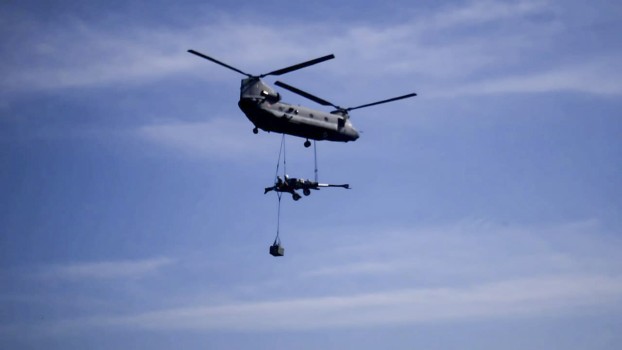HPT-32 Deepak aircraft. An IAF photo
NEW DELHI (PTI): It is virtually the end of the road for the Air Force's HPT-32 basic trainer aircraft that were grounded last August following a crash in which two ace pilots were killed.
The Indian Air Force is on the verge of retiring the HPT-32 'Deepak' fleet, used for 25 years to help pilots of the air force to take baby steps in flying planes.
But the only thin thread that could hold the 125-aircraft fleet's service life for a few more years is an experiment that Defence PSU Hindustan Aeronautics Limited (HAL) is attempting on the aircraft -- parachute assisted recovery system for safe landings.
"The service life of HPT-32 is virtually over. If the HAL's attempt at enabling safe landing of the aircraft with parachute recovery system succeeds, the aircraft may be in service for may be two more years," a senior IAF officer told PTI here Sunday.
The Deepaks or Hindustan Piston Trainer-32 is indigenous aircraft designed by HAL in late 1970s and inducted into the IAF to train rookie pilots in their stage-I course in the flying branch in 1984.
The aircraft, with speeds of 280-kmph and a range of 1,400-km, is used for primary training, observation, liaison and target towing.
It also has four hard points to carry 255-kg war load, machine gun pods, bombs and rockets, and can be used as fighter planes.
In the mishap on July 31 last, an HPT-32 crashed in Medak district of Andhra Pradesh, killing the two experienced pilots from the Air Force Academy that trains rookie pilots.
Soon after, the entire fleets of Deepaks were grounded with the probe into the mishap bringing out structural defects in the aircraft. Since then, it has remained grounded with the IAF deciding to get rid of the fleet due to flight safety considerations.
What the HAL is attempting now is to provide an additional system to the aircraft to assist its smooth landing. The parachute system is an aid in recovering the aircraft by safely lowering it to the ground from an emergency in the air.
A solid-fuel rocket housed in the aft fuselage is used to pull the parachute out from its housing and deploy the canopy full within seconds.
The system is designed into several light airplanes the world over and the design goal of these systems is survival of the crew and passengers.
Just a couple of more years because, the IAF had last December issued a tender to buy 75 basic trainer aircraft to global manufacturers such as Embraer for its Tucano, Pilatus for PC-7 or PC-9, Raytheon T-6 Texan, Finmeccanica M-311, Grob Aircraft Company G-120TP, EADS PZL for PZL-130-TC-11 Orik and Korea Aerospace Industries for KT-1.
"These companies have already submitted their responses in March this year and the tenders are likely to be decided by this yearend following trials. And the first lot of the new basic trainers under this contract would be inducted into the IAF within two years from now," the officer said.
These new trainers would be the replacements for HPT-32s.
Till then, the IAF would do well with its Hindustan Jet Trainer-16 or HJT-16 'Kiran' trainers to teach young cadets how to fly, he added.
 Previous Article
Previous Article Next Article
Next Article













The Indian Air Force, in its flight trials evaluation report submitted before the Defence Ministry l..
view articleAn insight into the Medium Multi-Role Combat Aircraft competition...
view articleSky enthusiasts can now spot the International Space Station (ISS) commanded by Indian-American astr..
view article